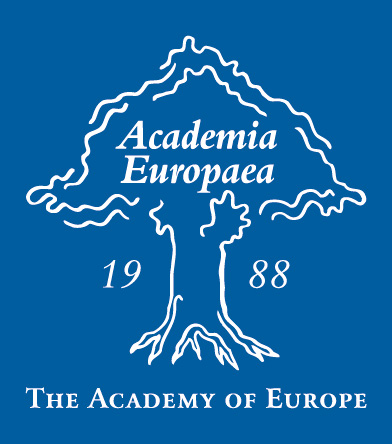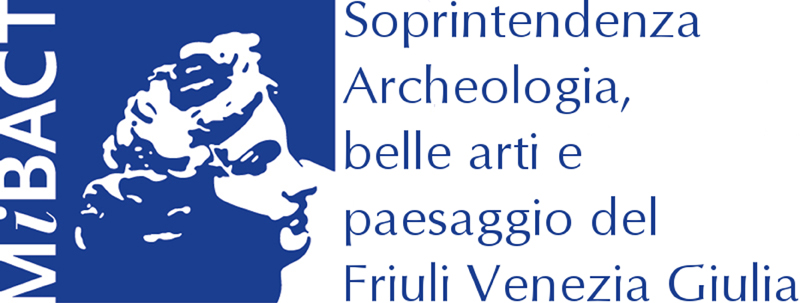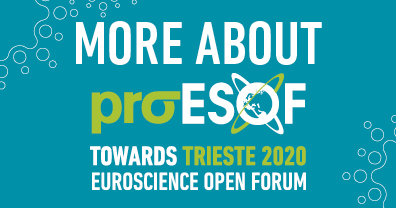
Oskar Schlemmer:Vierzehnergruppe 1930
This event is open to participation by members of the AE and YAE. To comply with the organization schedule for the conference and the allocation of funds,
applications to register and to be considered for (potential) defraying of travel expenses should reach Prof. Ferrini by
June 15th 2018 and include a short statement of reasons to attend and participate in the discussions.
The Department of Humanities of the University of Trieste and the
Academia Europaea (Hubert
Curien 2018 fund), are linking up key research questions in the humanities and the social sciences.
With the support of these two institutions, Prof. Ferrini will organize an international conference in
Trieste on the topic of
Human Diversity in Context on 25-26 September 2018. The conference has also been included in the agenda of the Trieste 2020 Pro Euroscience Open Forum's events.
Different competences and research fields based in the Humanities and Social Sciences Classes of
the
Academia Europaea are brought together as aspects of the study of the production and
transmission of what the European societies have assumed and represented as ‘human’, in accord
with shared research interests of the Department of Humanities of the University of Trieste.
Scholars from classics and oriental studies, history, anthropology, literary studies, philosophy,
social and cognitive sciences will meet to develop new strategies for integrating the form and
content of knowledge, expressly for
public benefit, by conveying socially
contextualized knowledge
and understanding of the complexity of the real world and its cultural and religious structures,
facets and objects.
This conference will also exhibit possibilities of synergy between the pan-European network of the
Academia Europaea and members’ local university institutions and research projects.
Rationale:#
In the last decade European countries have been restlessly animated by national and transborder
debates about issues of faith and tolerance; identity and difference; marginalization and integration;
heterogeneity and homogenisation; individual freedom and social security, especially when
confronting the increasing waves of forced migration, ‘ethnic cleansing’, extra-European
immigration, growing minorities representing ‘other’ systems of belief (whether Islamic, Jewish, or
animist, among others), issues of international and foreign policy and the organising of public
opinion regarding forms of intervention (diplomatic, military, economic, legal) in ethnic conflicts at
the borders of the European community.
However, projects recently funded by the European Research Council which confront a Europe that
questions what is European about itself as well as a Europe that needs to be able to present itself in
new ways to the other cultures and civilizations, seem to confine themselves either to exploring
alternatives to the dominant theoretical and political thinking from the selected viewpoints of
democracy, constitutionalism, economics and human rights, or at offering a ‘grammar’ of the
differences in the set of values based on the single and general key notion of ‘modes of existence’.
The new 9th Framework Programme for European Research for the Social Sciences and the
Humanities aims to address major research challenges, such as fostering the union of people
through mutual respect and understanding within a paradoxical context in which signs of economic
growth correspond to signs indicating increasing social inequalities, racial prejudices, and anxiety
over the future.
The Human Diversity in Context conference will offer a multifaceted critical examination of the
ways, tools and strategies through which European societies have historically envisioned and now
confront, construct and conceptualize their perception, representation and evaluation of the
difference-in-unity of mankind. The scope of the conference will range from the recognition and/or
reconstruction of religious identities and the legal status of minorities, together with the formation
of territorially bounded human collectives, to the analysis of wounded identities or competing
regimes of memory, from the dialectical examination of processes of ‘othering’ to cultural and
physical anthropological narratives and classifications of mankind, exploring which cognitive skills
humans share and do not share with animals. On the whole, the conference will examine the
definitions, varieties and limits of what has been assumed to be and represented as ‘human’ within
Western processes of identifying and distinguishing themselves from (purported) others (‘selfing’)
and its valuational diversity.
The organizer of the Conference has been the general research coordinator of the AE Humanities
class project, ‘Human Diversity in Context: Processes of Othering, Constructions and Dynamics of
Identities, Recognition of Valuational Difference in European Tradition’. By design, that project’s
structure drew upon and sought to derive added value through coordination of existing research
activities carried out by members of the AE Humanities and Social Sciences clusters (7 research
leaders), with the participants’ own university institutions engaged as research deliverers and
collaborators in the project (15 team members). A project that the main Foundations would not
support as it was presented.
The present initiative draws upon a smaller AE inter Classes research group composed by Cinzia
Ferrini (University of Trieste), Section ‘Philosophy, Theology and Religious Studies’; Susana
Onega (University of Zaragoza), Rosario Arias (University of Málaga) and Wolfgang Pross (Em. University of Bern), Section ‘Literary and Theatrical Studies Section’; Maria Paradiso (University of Sannio), Section ‘Social Sciences’; John Tolan (University of Nantes), Iván Zoltán Dénes (István
Bibó Center for Advanced Studies of Humanities and Social Sciences in Budapest) and Olga
Katsiardi-Hering (Em. National & Kapodistrian University of Athens), Section ‘History and Archaeology Section’.
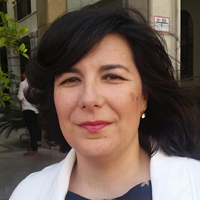
Rosario Arias
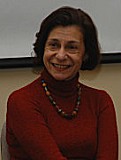
Carmela Baffioni
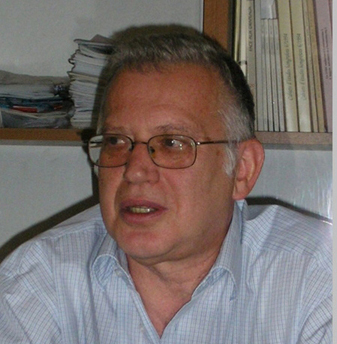
Ivan Zoltan Denes
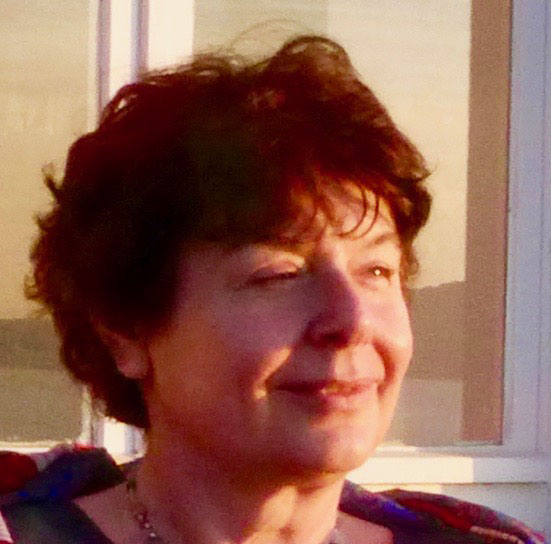
Cinzia Ferrini
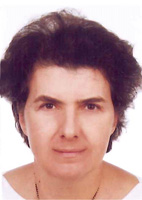
Olga Katsiardi

Susana Onega

Maria Paradiso
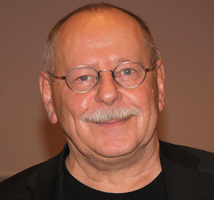
Wolfgang Pross
Programme#
In collaboration with the Soprintendenza Archeologia, belle arti e paesaggio del Friuli Venezia Giulia and under the patronage of proESOF
Tuesday 25, September 25th#
Soprintendenza Archeologia, belle arti e paesaggio del Friuli Venezia Giulia
Palazzo Economo — Salone Piemontese
, II Piano
P.zza della Libertà 7, Trieste
9:00-9:30 Welcome Address and Introduction
Simonetta Bonomi, Soprintendente
Maurizio Fermeglia, Rector of the University of Trieste
Elisabetta Vezzosi, Head of the Department of Humanities
Cinzia Ferrini, Member of the Academia Europaea and of the Department of Humanities
SESSION 1:
SOCIAL CO-EXISTENCE OF DIFFERENT IDENTITIES: MODELS OF DIVERSITY IN HISTORICAL PERSPECTIVE
Chair:
Iván Zoltán Dénes
9:30-10:00
John Tolan (MAE, Univ. Nantes):
Legal Construction and Co-Existence of Religious and Ethnic Identities at the Origin of Contemporary European Societies
In premodern societies, in Europe and elsewhere, law was rarely conceived as applying to all in the same way. On the contrary, the principle of “personality of law” implied different sets of rules and procedure for different persons, classified according to categories of ethnicity, religion, social class, age and gender. In the 4th and 5th centuries, the Christian Roman Empire forged laws that made Christianity the state religion, brought the Church under imperial control and closed the pagan temples. At the same time, these laws (in collections such as the Codex Theodosianus of 438) offered to Jews both protections (rights to worship, to maintain synagogues, to respect the sabbath) and restrictions (prohibition from marrying Christians and from excercizing certain state offices). Similarly, in the wake of the Muslim conquests of the 7th century, gradually-evolving Muslim law classified Christians, Jews, Zoroastrians and other non-Muslims as dhimmis, with a similar protected but inferior status. These dhimmi communities enjoyed relative legal autonomy under the tutelage of Muslim rulers, as long as they accepted their subservient status in the larger Muslim society. These systems of inferior legal status for religious minorities remained prevalent until the 18th century, when they were called into question by the new egalitarian ideas promoted by the American and French revolutions, leading in the 19th century to the legal emancipation of Jews in many European states and the abolition of the millet system by the Tanzimat reform movement in the Ottoman Empire.
10:00-10:30
Carmela Baffioni (MAE, Lincei):
The “Language of God” in Muslim and Jewish Traditions: A Case Study
My paper examines a part of an addition to Epistle 50 of the Ikhwān al-Ṣafā’ (the Brethren of Purity). The Brethren of Purity are the authors of an encyclopaedia that recent scholarship dates at the first half of 10th century at the latest. Epistle 50 deals with the various kinds of administration (or of “proper attitudes”) toward body and soul. The addition is found in the MS Istanbul Esad Efendi 3638 (1287 CE). It is an esoteric text whose aim is the explanation of the inner meaning of the story of Adam. The final part approaches God’s “submission” (taslīm) of language to Adam, and the corruption of language after Adam’s fall. Numerous elements are added to the Qur’anic tale of sura 2, vv. 31-37, a text that differs from the Biblical account in Genesis. I wish to briefly compare this chapter to the views on divine language held by the Jewish-Spanish mystic and thinker Abraham Abulafia (1240-1291 [?]), who founded his Kabbalistic views on divine language. As is well known, Abulafia developed his theories on the basis of the first script on this topic, the ancient Sefer yetzirah (2nd cent. CE?). The comparison follows my previous examination of Walter Benjamin’s article, On Language as Such and on the Language of Man, which has been of great help in the comprehension of the Arabic text. This article was probably influenced by Gershom Scholem’s research on the same topic. Despite the notable differences between the approach of the Arabic text and that of Abulafia, the timing of the anonymous author of the addition and of Abulafia legitimate the comparison. There is further evidence of the circulation of these ideas in the Muslim and Jewish contexts and between the Muslim East and al-Andalus.
10:30-11:00 Discussion
11:00-11:30 Pause
SESSION 2:
COMPREHENDING OTHERNESS IN PHILOSOPHY AND RELIGIOUS SCIENCES
Chair:
Wolfgang Pross
11:30-12:00
Gereon Wolters (MAE, Leopoldina, Em. Univ. Konstanz):
Constructing the Religious 'Other'
As already Aristotle pointed out, Homo sapiens is a social animal. “Social” means that every individual belongs to a group of people or to various such groups. Examples are families, tribes, nations. How are such groups kept together? In my presentation, I will show that religion is a primary means of building up the cohesion of social groups, and a first rate component of their – sit venia verbo! – identity. Constructing religious “otherness” provides the negative complement of religious identity, and contributes greatly to its consolidation. This is mostly shown with examples from the holy texts of Judaism, Christianity and Islam.
12:00-12:30
Cinzia Ferrini (MAE, DiSU):
Overcoming the Immediate Externality of the Other:
Hegel’s Lesson on Subjective Identity
Hegel speaks of human self-knowledge (i.e. of grasping one’s “I”) in terms of “self-elevation” above the singularity of sensation to the universality of thought and as addressing human truth and knowledge. However, if we regard his famous injunction “know thyself” as meaning that a self-conscious I must become another for itself, only in order to be able to identify with itself, then our self-knowledge would rest upon a hypertrophy of the subject’s sense of identity. For this reason Hegel has been charged with subordinating concrete difference and real alterity to abstract and idealistic self-identity. Is this Hegel’s lesson on subjective identity? To answer this question I will examine how the phenomenological path brings to light the awareness of the common rationality of human beings in terms of the subject’s capability to know oneself as oneself within the others passing through the necessity of negating the self-sense of one’s own natural essential singularity. My aim is to show how Hegel’s initially abstract subjective identity (the “I”) is torn out of its simplicity and self-relation (I am I), loses its independent punctual subsistence and, by overcoming the indifference and immediacy of what is other than itself, assumes an inter-subjective and objective dimension. I shall account for the “I”’s phenomenological process of transforming the accidentality, externality and necessity of its outwardness and inwardness into the socially shared spiritual representations, purposes and norms of any historical statal community of human agents. My conclusion is that subjective self-identity does not absorb, dominate, or suppress otherness because it rather culturally appropriates the prima facie indifferent alien significance of what is other than oneself through the individuals’ self-knowledge of their own theoretical and practical activities: in Hegel’s absolute idealism, relational characteristics enter the definition of what is substantial or prius in individuals qua embedded in an interconnected totality.
12:30-13:00 Discussion
13:15 Light lunch
SESSION 3:
IDENTITY AND OTHERNESS IN CULTURAL ANTHROPOLOGY, NATURAL HISTORY AND COMPARATIVE PSYCHOLOGY
Chair:
Cinzia Ferrini
15:30-16:00
Wolfgang Pross (MAE, Emer. Univ. Bern):
Assimilating Reported Natural Histories of Human Diversity: Theories on the Nature of Mankind
Until late 18th century, two paradigms provided seemingly valid etiologies for human diversity: the accounts of the Bible (Cain’s secession from his family, Noah and the Flood, the confusion of languages at the tower of Babel), and the theories of the influence of climate on the physiology of humans. Natural history, however, developed one more, quite different approach: by comparing the distribution and adaptation of animals to the climate zones of the globe, it was evident that almost only mankind was capable of sustaining themselves under all life conditions, from the torrid zones to the polar regions. But how did they survive the changes of the surface of the earth, in order to populate the globe in its total extent? The discovery of Australia and the inhabitants of the islands of the Pacific gave momentum to the already lingering alternative of monogenism and/or polygenism; and the “geographical history of mankind” was closely linked to questions of the natural history of the earth. The paper will focus on five authors, beginning with Count Buffon and his Natural History (Histoire naturelle de la terre, Histoire naturelle de l’Homme, Variétés dans l’espèce humaine, 1749; Suite des variétés, 1777). It will discuss the polygenism of Henry Home, Lord Kames (Sketches of the History of Man, 1774, revised version 1778) and the geographical histories of quadrupedes and mankind by Eberhard August Wilhelm Zimmermann (Specimen zoologiae geographicae, quadrupedum domicilia et migrationes sistens, 1777; Allgemeine geographische Geschichte des Menschen und der vierfüßigen Thiere, 1778-1783). Zimmermann inspired the treatment of these problems by Johann Gottfried Herder (Ideen zur Philosophie der Geschichte der Menschheit, Vol. 1 and 2, 1784/85) and his monogenism. Before publishing his monumental Kosmos (1845/62), Alexander von Humboldt gave his famous preparatory lectures in Berlin (1827/28), in which he summarized the results of the debate, denying the validity of any concept of different races and defending the unity of mankind
16:00-16:30 Mario Marino (Univ. Cottbus):
Describing, Measuring and Classifying Human Beings: Natural Science and the Birth of Anthropology in the Age of Enlightenment
Against the background of the paradigm shift in natural history in the late 18th century, the influential works of Johann Friedrich Blumenbach (1752-1840) which were published between the last three decades of the 18th century and the beginning of the 19th century – De generis humani varietate nativa, Handbuch der Naturgeschichte, Beyträge zur Naturgeschichte – offered the first modern racial classification of human varieties. My presentation discusses the development of such intellectual enterprise by especially focusing on the following questions: the role of climatic and cultural factors in the variation of human nature, the theoretical presuppositions and methodological foundation of craniological classification, the alternative between variety and race. My aim is to show the theoretical, methodical and conceptual shifts as well as the ambivalences which are inherent to Blumenbach’s classification. To highlight these arguable aspects would help to understand their controversial reception in the anthropology and history of science of the 19th and 20th century.
16:30-17:00 Cinzia Chiandetti (DSV):
How the evolutive continuity of cognition challenges antropocentrism and antropomorphism
Non-human animals are still widely believed to live in an eternal present, acting like automata that react to external stimuli with predisposed simple reflexes. Common to such view is the intuitive notion that organisms are placed on a virtual ladder reflecting, from the bottom to the top, the degree of structural and cognitive complexity of the animal, with the human being at the vertex of the ladder. Such vision, rooted in the philosophical tradition, may have its origin in the tendency of our cognitive system to categorize events and entities, and can be shaped by the prison of our Umwelt, which forces us to see the natural facts throughout anthropocentric and anthropomorphic lenses. Us/Them is a dichotomy used to differentiate humans from non-human animals, but it is also used to differentiate human beings on the bases of races, genders, religions, socioeconomic status, and so forth. The criteria for inclusion/exclusion in the Us/Them category are sustained by activation of specific brain areas, but these criteria can change because of previous experience. However, a large body of experimental studies shows not only that non-human animals behave flexibly in response to environmental challenges, but that they also plan for future needs instead of behaving simply on the basis of current needs. This is in agreement with the idea that the differences in mental abilities between species are just a matter of degree, as Darwin correctly suggested. However, people can easily change their innate bias in animals categorization when they are briefly exposed to videos showing “intelligent” animal behaviors, which also make them abandon the ladder-like view in favour of a Darwinian-tree-like representation of animal complexity. Whether or not a similar reorganization can apply to the other dichotomies (e.g. religious, gender) is a possibility that remains to be investigated in future studies.
17:00-18:00 Discussion
19:00
Guided tour to the Greek Orthodox Museum of Saint Nicholas Church
20:30 Conference Dinner
Wednesday September 26th#
Soprintendenza Archeologia, belle arti e paesaggio del Friuli Venezia Giulia
Palazzo Economo —
Salone Piemontese
, II Piano
P.zza della Libertà 7, Trieste
SESSION 5 -
HUMAN DIVERSITY IN SOCIAL AND POLITICAL CONTEXTS
Chair:
John Tolan
9:30-10:00
Maria Paradiso (MAE, Univ. Sannio):
Ethnic Minorities and Migrants Success in Embedding Themselves in Destination Country or Their Majority Space
This presentation stems from a co-authored chapter with Itzhak Schnell, Ahmed Diab (Tel Aviv University) in the frame of a FP7 Marie Curie MEDCHANGe project grant coordinated by the Author. The study is based on a cross cultural comparison of three cultural groups in three Mediterranean countries (Morocco, Italy, Israel). The aim is to suggest a methodology to measure the degree to which ethnic minorities and ethnic migrants move their existences into their destination country or their majority places and milieus: it consists of a multidimensional model that investigates the sources of social, cultural and emotional forms of capital either from intra-ethnic or inter-ethnic. The theoretical section sets the foundation for the operationalization of embeddedness in contexts of social, cultural and emotional linkages. Then the presentation describes the research methods leading to preliminary results based on examples of a small number of representatives of three different ethnicities. We operationally define the location of a person’s existential Zero Point in terms of a person’s social, cultural and emotional embeddedness in either host/majority or origin place. We test our measurement on exploratory groups of subjects from three different ethnicities: Italians in Morocco; Moroccans in Italy and Christian Arabs in Israel. Two groups are of immigrants and one of a native ethnic minority. Such a choice enables the comparison between immigrants who have experienced spatial mobility and transition in residential space and an ethnic native minority that experiences mobility and transition in commuting space. The results of a specific questionnaire were used in order to characterize patterns of embeddedness either in places of origin or in host/majority places: they show that minorities either tend to isolate themselves from host/majority milieus or to integrate by embedding themselves in both host/majority and origin places. The assimilationist strategy is rejected in almost all cases. The main level for embedding in host/majority milieus is the emotional aspect that is followed by learning host/majority language and socializing in host milieus.
10:00-10:30
Iván Zoltán Dénes (MAE, President of the István Bibó Center for Advanced Studies of Humanities and Social Sciences, Budapest):
Political Hysteria as a Chance for Making Autocratic State
How is it possible that politicians entrusted with the representation of public good by the citizens should be able to use old and new forms of autocracy and dictatorship with cynical openness? The answer is to be found in the exertion of uninhibited power by means of the technical exploitation of earlier under-elaborated grievances, fears and traumas. When, instead of the construction and consolidation of democratic legitimacy, a liquid or vacuous situation dominated by uncertainty and fear emerges, there is a great demand of enemy images. The temptation will be great to place the final solution to the puzzle in the conspiracy of background forces inimical to the dominant race, nation or class, and this, in turn, will make the masses believe that the one who has unveiled the plot is entitled to do as she/he likes. In this way, unlimited personal rule replaces the independent institutions that are supposed to enable the fine-tuning of democracy. This limitless personal power is ensured by the concentration of power, instrumentalization of legislation, repression of jurisdiction, personal control, redistribution of common goods, demand for unconditional loyalty to the leader and propagandistic dissemination of her/his will and world-view.The deconstruction of the rule of law and the building out of a beastly (Leviathanian) state results in a state that does not keep its promises, terrifies and threatens. The republican principle of the common good, the aristocratic principle of moderation and the monarchic principle of honour are replaced by fear as the organizing principle of tyranny. This is not the outcome of personal despotism alone. A leader of this kind emerges against the background of political hysteria which has grown out of historical traumas and fear reactions. This has led to the personal rule based on traditional and modern forms of power concentration.
10:30-11:00 Discussion
11:00-11:30 Pause
SESSION 6 – MODERN AND CONTEMPORARY HISTORIES OF SELF-IDENTITY AND DIASPORA
Chair: Tullia Catalan
15:30-16:00
Olga Katsiardi-Hering (MAE, Em. National & Kapodistrian Univ. of Athens):
Diaspora and Self-representation: The Case Study of Greek People’s Identity 15th-19th c.
In the long space-time between the late 15th and early 19th centuries Greek Orthodox people from Southeastern Europe have established communities / “colonies”/ ‘paroikiai’ in various cities in central, northern Europe, at the Mediterranean and at the Black Sea. The reasons for this were political, cultural and economic. Their establishment in the host cities was a result of their interest and, of course, a consequence of the privileges granted to them by the local authorities, more or less because of their special economic interest. In these diaspora communities Greeks, Serbs, Albanians, Aromunians as well as Bulgarians, founded their Greek Orthodox churches, and organized their common communities. Very often and, particularly, during the 18th century, they conducted different ways of organization, following their own ways of national identification. The common Orthodox dogma was not sufficient as a combining element. The “Jus-nationis” took the important place of the “Jus religionis.” The commercial and intellectual networks, built by these diaspora Greek Orthodox people, were another interesting phenomenon of this long space-time. The co-existence of Greek Orthodox with other Orthodox, Catholic, Protestant, Armenian, Jewish people in the diaspora led, from the mid-18th century, to the more or less intense strengthening of the “us” towards to the “others.” The formation of the nation states in Southeastern Europe (the first among them the Greek one, in 1830) was also a result of this long and interesting way towards national identification.
12:00-12:30 – Paola Toninato (Univ. of Warwick):
National Assimilation Policies and Ethnic Resilience: The Case of Western European Roma
The Romani presence in Western Europe dates back at least to the early 15thcentury. The nomadic “Gypsies” were soon labelled as “undesirable” and subjected to state control. The paper discusses a range of public policies that were enacted from the 16thcentury onwards in order to exclude and ultimately assimilate Romani groups within mainstream European society. Such policies originated from a number of deeply engrained views and stereotypical categories that still pervade the public and legal discourse on “Gypsies.” Focusing on the Italian context, the paper aims at deconstructing misleading “Gypsy” categories by contrasting them with the Roma’s own experiences, and highlighting the non-binary, non-exclusionary logic underlying their self-definitions. In the face of relentlessly hostile attitudes, the resilience demonstrated by Roma and Sinti enabled them to actively adapt to the changing socio-political circumstances without losing their ethnic identity. Two main instances of resilient cultural strategies will be analysed: the rise of a transnational written Romani literature and the emergence of the Roma as a political subject challenging the traditional national-identity paradigm through the use of non-territorial, diasporic model.
12:30-13:00 Discussion
13:15
Light lunch
15:00-18:00
Conference Room, Trieste Jewish Community - Via del Monte 5
SESSION 7 – CONTEXTUALIZED PERSPECTIVES: STORY-TELLING OF INJURED IDENTITIES IN CONTEMPORARY NARRATIVES AND HISTORIES OF DISCRIMINATION
Chair: Olga Katsiardi-Hering
15:30-16:00
Susana Onega (MAE, Univ. Zaragoza):
The Role of Symbolisation in the Shaping of Reality and Identity: Tales of Woundedness and Healing
The paper begins by endorsing Merlin Donald’s description of symbolisation from “the mimetic mind,” through the birth of language and, with it, of narrative thought, to the eventual development of complex systems (ritual, myth, religion, art and literature) that would be essential for the shaping of reality and identity. The cognitive imperative to orient ourselves in the world by ordering and classifying it, is constantly curtailed, however, by the human capacity for self-knowledge, which includes the shattering perception of our own mortality. Confronted with the open quest for the meaning of reality, human beings have developed the capacity to take distance from their ordinary experience and maintain simultaneously separate and contradictory bodies of knowledge, so that and we may “know without knowing” (Bloom 2010, 202). Transition rituals an artistic performances are common forms of achieving collective states of dissociation that attenuate the traumatic impact of reality and enhance the social cohesion of the group. But staying in a sustained state of dissociation or negative relationship with our empirical consciousness entails the risk of self-fragmentation. As Boris Cyrulnik argues, this risk is reduced through creativity and storytelling, since “as soon as we put sadness into a story, we give a meaning to our sufferings” (2011, 4). Drawing on this, my presentation offers examples of spontaneous engagement in creative activities as a form of resilience in such life threatening conditions as those endured by inmates of Nazi camps, or of Guantánamo prisoners in the context of the “War on Terror.” It then goes on to consider the role of classical wondertales in the transgenerational transmission of awful but necessary knowledge, and ends with a brief comment on the paradigmatic use the British writer of German-Jewish origin Eva Figes (1932–2012) makes of myth and wondertales as a way to assimilate, transmit and work through her Holocaust trauma.
16:00-16:30
Rosario Arias (MAE, Univ. Málaga):
The ‘Other’ Voice in Survivor Narratives: A Gender-based Approach to the Holocaust
In this paper I will undertake a gender-based approach to survivor narratives written by women, a controversial topic among historians of the Holocaust. Two oft-quoted texts in survivor narratives, Primo Levi’s If This is a Man (1947) and Elie Wiesel’s Night (1960), among others, have always attracted critical attention since they were first published. However, women’s survivor narratives have been conspicuously absent from critical study, or rather, they have not been analysed from the specificity of a gender approach. Since the 1990s, Carol Ritter, Joan Ringelheim and Sara Horowitz have been keen to produce the perspective of the “other” voice, by paying attention to the way women are figured in texts by men, to the way women’s personal experiences are portrayed in women’s narratives, and finally, the significance of gender in understanding the Holocaust as a whole (Horowitz 366-67). In this sense, the conceptualisation of “gender wounding”, defined as “a shattering of something innate and important to her sense of her own womanhood” (366), will be crucial in my take on women and gender in the Holocaust. For example, Charlotte Delbo’s trilogy Auschwitz and After (1995), which consists of three volumes, None of Us Will Return (1946/1965), Useless Knowledge (1946-47/1970) and The Measure of Our Days (1960s/1971), translated into English by Rosette C. Lamont, has contributed to a more nuanced analysis of survivor narratives, in general, but also that of the gender aspects narrated in her text, in particular. When her husband was killed in May in 1942, and she was transported to Auschwitz, alongside two hundred and thirty other Frenchwomen, most of them members of the Resistance, and who had been arrested not for ethnic or religious issues, but for political issues. Delbo stayed in Auschwitz (Birkenau-the female side of Auschwitz), and a satellite camp until January 1944, and then she was sent to Ravensbrück, a women’s concentration camp. Interestingly, this camp has been neglected in the work of the historians. Sarah Helm, in her If This Is a Woman: Inside Ravensbrück: Hitler’s Concentration Camp for Women (2015), whose title plays with Levi’s well-known title, attempts to set history right in giving Ravensbrück, as well as the stories generated in the camp, the place it deserves in the history of the Holocaust. Therefore, in my paper I will deal with the ways in which the female voice, a vulnerable ‘other’ within others, is heard, and how this will help the reader re-orient women’s position in the history of Holocaust and in Holocaust literature.
16:30-17:00 Tullia Catalan (DiSU):
Anti-Semitism and Nationalistic Identities in the Italian Women's Testimonies of the Spielberg Shoah Foundation Archives
I shall present some oral testimonies of Italian Jewish women survivors of the Holocaust by examining the interviews recorded in several Italian regions, collected by the USC Shoah Foundation. My aim is to understand how these women perceived the anti-Semitic persecution during Italian Fascism (1st phase: 1938) and the Nazi Occupation of Italy (2nd phase: 1943-1945). I shall highlight the aspects of convergence and divergence that we can find in the experience of these Italian Jewish women by taking into account their reactions and defensive strategies, as well as the impact of persecution on their private and emotional sphere after WWII. I shall also focus on the specific features which characterize Italian anti-Semitism, trying to define how these Jewish women remember its stereotypes and themes.
17:00-18:00 Discussion
Guided tour to the Jewish Museum Carlo and Vera Wagner – Via del Monte 5
20:30
Farewell Conference Dinner
Download#
Contact:#
Cinzia Ferrini
ferrini@units.it
Department of Humanities, University of Trieste
Androna Campo marzio 10, 34100-Trieste
+39 3493996168
How to get there#
By car: Take the highway A4 Venezia-Trieste (exit Trieste-Lisert). From here through the highway E40 to Villa Opicina, or take the main road SS 14 (Duino-Trieste), then drive along the coast until the end of Viale Miramare.
By train: Soprintendenza head offices are situated in front of the train station, next to the buses terminals. You will get the offices by foot in a few minutes.
By plain: Airport Ronchi dei Legionari (Trieste) http://www.aeroporto.fvg.it
By bus: Urban buses n. 1, 3, 6, 8, 17, 19, 20, 21, 22, 23, 24, 30, 39, 40, 41, 42, 51 stop right outside the train station, not far away from Palazzo Economo. Urban buses n. 6, 36 connect Palazzo Economo to Miramare Castle, from the stop at the start of Viale Miramare. You have to get off at the stop on Viale near the research centre and the Grignano terminus. To turn back make the inverse path.
By Pullman: Connections with main Italian and European destinations and Adriatic coast’s tourist locations.
http://www.autostazionetrieste.it
http://www.saf.ud.it


 , II Piano
, II Piano , II Piano
, II Piano
 of the speakers
of the speakers




 #
#










